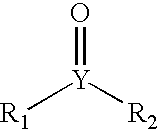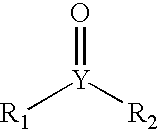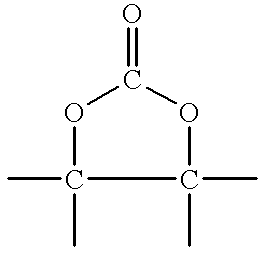Composition and method for removing photoresist materials from electronic components
a technology of electronic components and materials, applied in the direction of cleaning using liquids, instruments, applications, etc., can solve the problem of high volume of undesirable liquid waste streams
- Summary
- Abstract
- Description
- Claims
- Application Information
AI Technical Summary
Problems solved by technology
Method used
Image
Examples
example i
For making the invention run described in this example, equipment was set up in the manner shown in the schematic of FIG. 2.
Carbon dioxide was used as the dense phase fluid and propylene carbonate was used as the dense phase fluid modifier for removing photoresist material from the silicon substrate of a semiconductor chip wafer.
A mixture of 5% propylene carbonate and 95% carbon dioxide supplied by Scott Specialty Gases, Inc., in a standard size A syphon cylinder was used as feed material for a propylene carbonate and carbon dioxide reservoir 11. The pressure in the syphon cylinder was approximately 900 psi at room temperature, which was sufficient to maintain the contents in liquid form.
The propylene carbonate and carbon dioxide reservoir 11 was connected by a conduit 13 to an ISCO.TM. 260D syringe pump 15 which was in turn connected by conduit 17 to a Whitey.TM. 304L-HDF4 1000 cc high pressure sample cylinder which served as a ballast tank 21. The conduit 17 between the syringe pu...
example ii
A set of runs were made for purposes of comparison of use of unmodified supercritical carbon dioxide, modifier alone, and combinations of supercritical carbon dioxide and modifier using varied temperature, pressure and contact conditions. The compositions and contact conditions of these runs are shown in Table I.
Runs 1 through 4 were comparison runs; Runs 5 through 12 were invention runs.
Runs 1, 2, and 4-12 were performed using an ISCO.TM. 260D syringe pump controlled with a series D controller. For Runs 5, 6 and 7, a larger scrub pump was also used in a separate step.
In Runs 1 and 2, 100% carbon dioxide was delivered by the pump to an ISCO.TM. SFX-2-10 supercritical fluid extractor.
In Runs 3 and 4, 100% propylene carbonate then 100% carbon dioxide was sequentially delivered by the pump to the ISCO.TM. SFX-2-10 supercritical fluid extractor.
In Runs 5, 6 and 7, a mixture of 5% propylene carbonate and 95% carbon dioxide, supplied by H.P. Gas Products, Inc., was delivered by the pump t...
PUM
| Property | Measurement | Unit |
|---|---|---|
| pressure | aaaaa | aaaaa |
| temperature | aaaaa | aaaaa |
| pressure | aaaaa | aaaaa |
Abstract
Description
Claims
Application Information
 Login to View More
Login to View More - R&D
- Intellectual Property
- Life Sciences
- Materials
- Tech Scout
- Unparalleled Data Quality
- Higher Quality Content
- 60% Fewer Hallucinations
Browse by: Latest US Patents, China's latest patents, Technical Efficacy Thesaurus, Application Domain, Technology Topic, Popular Technical Reports.
© 2025 PatSnap. All rights reserved.Legal|Privacy policy|Modern Slavery Act Transparency Statement|Sitemap|About US| Contact US: help@patsnap.com



